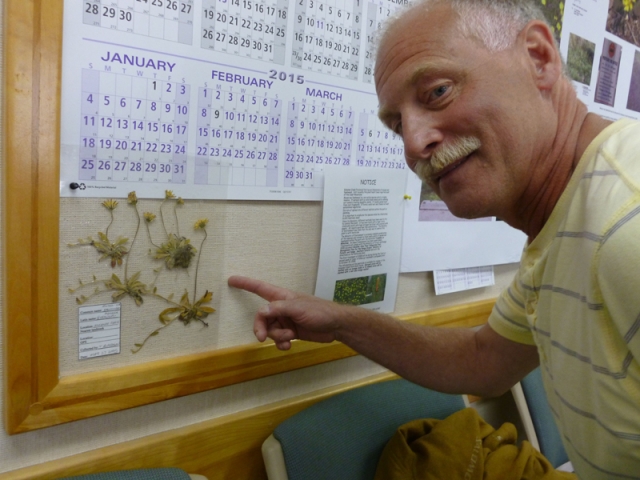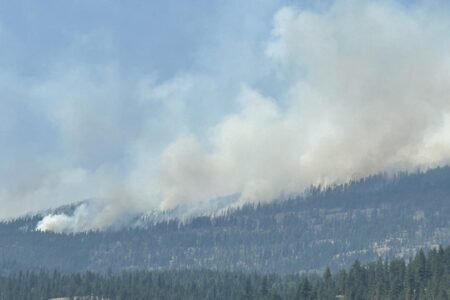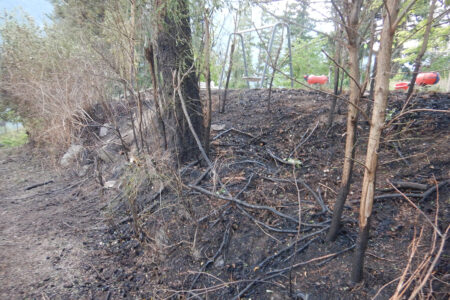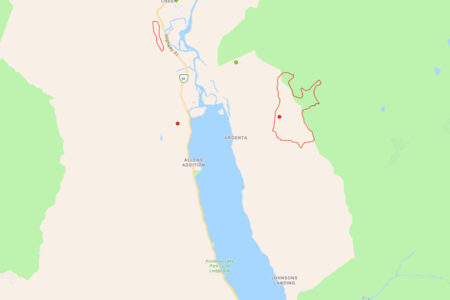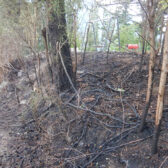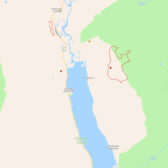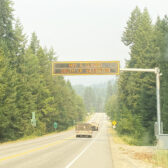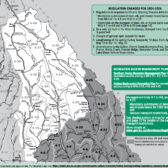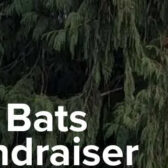Plants out of place
If Terry Anderson has his way, goats will be grazing in Kokanee Creek Provincial Park to control invasive plants.
But some plants out of place just keep coming back and taking over, and that’s when pesticides are used, said the Habitat Officer at the Ministry of Forest, Lands and Resource Operations (FLNRO) at an Invasive Plants open house May 28.
“The rate of spread is pretty phenomenal,” said Anderson, who is in charge of the eradication of mouse ear hawkweed at the park.
Aminopyralid, a plant growth regulator sold as Milestone, will again be applied to reduce the matty, yellow flowered plant that Anderson says threatens plant diversity as well as forage for wildlife in the park.
“We have reduced it from solid mats to single plants,” he said at the Invasive Plant open house at the Four Mile Forestry office. “It can create a monoculture and be extremely aggressive.”
Hawkweed is actually just one of thirty invasive plants on FLNRO’s hit list at the park. These are plants that have come from Eurasia with little natural predator control to accompany them.
“Weonly target (chemically) the mouse-ear hawkweed which is a provincial priority, early detection, rapid response (EDRR) species, “ said Anderson.
“We use mechanical methods to treat other invasives like Scotch broom and Himalayan blackberry.
“I am working toward getting a herd of goats into the park to try them out on thistle, bedstraw, Scotch broom, blackberry, bristly locust and hoary alyssum.
“These species are concentrated enough to try the goats on,” he said. “The mouse ear hawkweed is too widely dispersed.”
Anderson said the hawkweed will be identified in the forest, the flower cut and the plant sprayed in the operation. He is confident that Milestone dissolves in the soil rapidly.
Anderson said other methods, such as mechanical control, like cutting and burning, or biological control using insects are used first. In fields, crop rotation or the introduction of competition is used.
“We only went to a herbicide as a last resort.”
Anderson was joined by staff from the Central Kootenay Invasive Plant Committee (CKIPC) at the three-hour open house.
The CKIPC is a non-profit society that delivers education and awareness programs, and promotes coordinated management efforts of invasive species in the Central Kootenays.
North Shore resident Jackie Nedelec, came to the open house to find out what, and how much was going to be sprayed this summer. Nedelec is a long time advocate for finding alternatives to pesticides.
“I want people to know what’s going on,” she said. Overall, she was pleased with the format and the time she spent sharing her ideas with CKIPC.
But she was critical of the lack of publicity announcing the open house. “The general public, not just the stakeholders, have an opinion, it’s their world, too.,” she said.
“I know invasive plants are harmful to BC, but so are pesticides.”
Nedelec noted that other major pesticide users such as BC Hydro and Highways and CP Rail were not at the open house.
“I’m satisfied, though, that they’re working on it. I felt I was heard, but good communication needs to happen more often.”
Anderson said he is well aware of the concerns around pesticides.
“As much as possible, we time our treatments to minimise exposure (mid to end of June then mid ro end of September) when there are fewer people in the park but the plants are actively growing,” he said.
Anderson said the Ministry informs people via posters on the park bulletin boards and marks each plant treated with an orange stake or patch location. “We only spray those plants and up to one metre around the stake,” he said.
The stakes stay up three weeks or longer, he added. Park facility operators are made aware of the spraying as well as visitors in the park.
For her part, CKIPC Executive Director Crystla Klym was pleased with the feedback from the open house.
“Those who attended the open house provided guidance to CKIPC on how to better
involve interested members of the public in invasive plant management, and learned how to identify, report and control priority invasive species like invasive knotweed, Scotch broom and hoary alyssum,” she said.
“Community involvement is incredibly important to us.”
For more information on indigenous plants for your garden or to get involved in CKIPC, go to www.ckipc.ca or call 250-352-1160.



